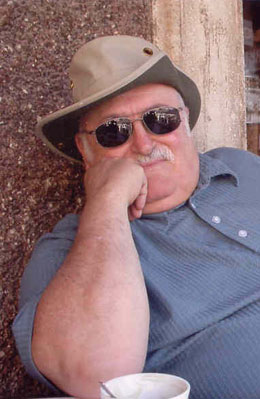 |
|
 |
|
||
 |
Globalization and the Cagli ProjectGlobalization is the mantra that seems to be driving much that is new in higher education today. It has its roots in the “global economy” and seems relevant mostly to the business disciplines. But there is a sub-text to globalization that resonates throughout all our institutions, and that is “diversity.” When we speak of diversity, we mean it in all its forms – ethnic, religious, racial, cultural and geographical. On the campuses of big state universities, diversity is a function of being public. But at most private colleges, especially the smaller ones, diversity exists mostly in programs and outreach activities. So instead, we encourage our students to “immerse” themselves in alien cultures in programs abroad. The Communication discipline is uniquely positioned to respond to both globalization and diversity. This is the age of the “foreign correspondent.” Embedded or not, there have never been more opportunities and outlets for journalists to practice their profession in foreign lands –for cable news outlets, for radio and TV stations, for newspapers, for web journals, for magazines. Yet very little is being done at both the undergraduate and graduate level to direct journalism students toward the career possibilities in being foreign correspondents. Nor is the discipline reaching out to students in other areas -- history, classics, economics, political science, philosophy, theology, languages, area studies -- to welcome them into what was once a highly specialized and clubby field. We are now in the third year of The Cagli Project. We have demonstrated that undergraduate students from disparate disciplines could come together and not only create a new journalistic form, the web documentary, but also practice international journalism at the grass roots level. So much that passes for education in international media is purely theoretical – focusing on comparative media systems, media law, and forays into the centers of global media power. As director of the project, it was always my intent to develop a template for international media education that could be applied directly from one venue to another. We are now ready to carry the message forward. As the Handbook goes to press, the development of an Institute for International Media Education is being conceptualized. This institute would offer many Cagli-style international projects that would introduce American undergraduates to the practice of foreign correspondency in one of the most intense immersion experiences available in higher education today. The institute would bring together faculty and students from many colleges and forge close links to practicing correspondents through such organizations as The Overseas Press Club. The Institute for International Media Education would be a logical construct for forming consortia, seeking grants, running seminars and conferences, and assisting other institutions that might want to begin similar programs. In our three years, 17 faculty from Loyola, Gonzaga and Creighton have teamed to create our unique approach. In all, 89 students from six colleges are contributing feedback to further refine the program. The experiment is over. Watch for future developments. Prof.
Andrew Ciofalo |
|
